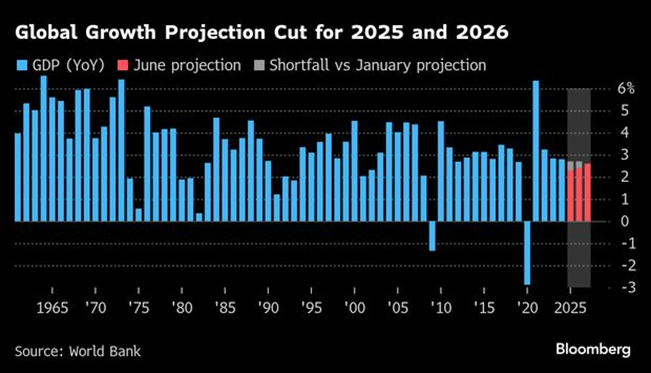
Thought of the Week:
When I first joined SCOA years ago, there was an orientation program that included an introduction to Japanese culture and a starter series on Japanese business terminology. I credit those early lessons with teaching me how to deliver my business card in Japanese and providing me with insight into the very different ways Americans and Japanese approach the world around them. One of those classes focused on the concepts of honne and tatemae, which refer to a person’s true feelings and outward behavior, respectively. Honne represents one’s genuine internal thoughts and desires, while tatemae is the outward facade or public persona adopted to maintain social harmony and avoid conflict. Because honne refers to actual feelings and opinions, while tatemae is the public face presented to the world, the two may not always align. The use of honne and tatemae not only offers the Japanese an avenue to navigate social interactions but also preserves the cultural values of harmony and group cohesion. At its core, it is a way to avoid confrontation, maintain relationships, and ensure smooth social/business interactions. Under these precepts in the workplace, we were told that “yes” might not mean “yes” but more “I hear what you’re saying;” that “very difficult” actually means “no way” and not “that will be a tough challenge;” and that some managers might go so far as agreeing with a proposal just to avoid disrupting the group. We were told that although recognizing honne and tatemae might be difficult to discern initially, understanding the duality was one key to navigating Japanese business culture. In a certain sense estimating the budgetary and economic impacts of proposed legislation has its own honne and tatemae in the forms of dynamic and static scoring. While dynamic scoring attempts to incorporate the macroeconomic effects of policy changes, such as how legislation might influence economic growth, consumer behavior, and investment, static scoring focuses simply on a proposal’s direct budgetary impact, assuming no other macroeconomic changes would take place. Although Republicans generally support dynamic budget estimates that include a bill’s projected impact on the economy, arguing that the method more accurately reflects the real-world effects of legislation, especially tax cuts, its use is unlikely to be considered when estimating the latest cost of the reconciliation bill moving through the Senate. In fact, using dynamic scoring, the Congressional Budget Office (CBO) said that the bill would increase the deficit by $2.8 trillion over 10 years when its long-term impact on the economy, interest rates, and inflation are factored in. This is $300 billion more than the CBO’s previous analysis of the One Big Beautiful Bill (OBBB), which used the static method of scoring that did not take outside factors into account. The latest numbers are unwelcome news for the Republican leadership, who has taken jabs from GOP budget hawks over the high cost of the legislation, driven largely by renewing tax breaks set to expire at the end of 2025. While the CBO said the bill would boost economic output and decrease the federal debt by $85 billion, the government’s borrowing costs would rise substantially, with interest payments on the federal debt increasing by $441 billion, effectively wiping out any benefits from the bill’s tax breaks and spending reductions. Republicans are generally strong proponents of dynamic scoring, because it typically delivers a lower cost for tax breaks compared to bills scored using the static method. This time, however, while the OBBB would increase GDP by an average of 0.5% annually over a ten-year period, that growth would be offset by an increase of 14 basis points in interest rates on 10-year treasury notes and a slight uptick in inflation. In a nod to honne Democrats are likely to continue to blast the legislation following the CBO’s new dynamic estimate, whereas Republican leadership will tack tatemae to maintain harmony within their caucus. As one GOP member of Congress told me with a wink last week, “Jamie, you know CBO estimates have to be taken with a grain of salt.”
Thought Leadership from our Consultants, Think Tanks, and Trade Associations
Eurasia Group Thinks the Reconciliation Bill is Likely to Move Later in July. Following the Senate Finance Committee’s release of its reconciliation bill text, analysts now see the bill as most likely to pass before the August recess (85% odds). Although passage before July 4 was targeted, prolonged negotiations in the Senate—with more to come in the House—have made that timeline implausible. For the bill to pass by Senate Majority Leader Thune’s (R-SD) initial target date, the House would need to accept the text as-is, with no additional changes. While that is technically possible, the need to resolve major differences likely pushes action to later in the month. The Senate Finance Committee’s text will likely not be the final iteration; lawmakers have still not resolved the key state and local tax deduction, which will be a primary source of conflict with the House. Nonetheless, the text’s release is an important step in moving the bill forward. The factors keeping the bill on track for passage before the August recess are:
- The debt limit’s X-date, which the Congressional Budget Office places as hitting mid-August; and
- Enormous pressure from President Trump to get the bill done quickly.
July will likely see a game of legislative ping-pong between the House and Senate as the chambers reconcile their respective versions of the bill. This may involve multiple votes in both chambers. The process took roughly three weeks during the passage of the 2017 bill, meaning that Republicans will still be on track for late-July passage if the Senate passes its version in the next two weeks.
Inside U.S. Trade Reports that Treasury Secretary Bessent Believes the July 9th Deadline will be Extended for Good-Faith Talks. According to Treasury Secretary Bessent, the U.S. is likely to extend a self-imposed deadline past July 9 to strike trade deals with countries negotiating in good faith. While the Trump administration had unveiled a new tariff regime that included country-specific tariffs based on goods trade deficits, President Trump later delayed the imposition of the tariffs until July 9 to give countries time to reach agreements with the U.S. During House testimony, Secretary Bessent said that there are 18 important trading partners; the U.S. is working toward deals with each of those countries or trading blocs, as is the case with the EU; and those groups that are negotiating in good faith, will see the deadline rolled forward to continue discussions. Since President Trump delayed the country-specific tariffs, administration officials have repeatedly promised to announce a flurry of deals; however, only one agreement has been announced to date—a framework with the United Kingdom, the details of which are still unclear. Commerce Secretary Lutnick has claimed that more deals could be announced as early as this week.
Inside the EPA Says Trump’s EPA is Redefining the Role of the Environment in Public Policy. The Trump administration’s effort to roll back the EPA’s and other agencies’ environmental rules, reorganize offices, and cut budgets and staff marks a massive redefinition of the environment’s role in federal policymaking. In fact, the president’s first 100 days were characterized by a sweeping reversal of the federal government’s commitment to environmental protection, with plans to scale back EPA rules, jettison environmental justice efforts, and streamline environmental reviews. The EPA and other agencies are being reorganized; some offices are expected to be shut down entirely; and 2,600 staff, about 20% of EPA’s workforce, have already applied to leave voluntarily. Although EPA Administrator Zeldin touts his commitment to cooperative federalism, the administration’s budget request asks Congress to cut billions of dollars from programs. To date, federal courts have blocked White House plans to reorganize the EPA and freeze Biden-era grant funds, but the administration is challenging such actions even before they reach the Supreme Court. Not only are dozens of rules being targeted for rollback, but the administration is urging rules they deem unlawful to be repealed by the EPA. What’s more, Senate Republicans seem willing to bypass established procedures to roll back EPA’s regulatory decisions; consider that GOP senators recently rescinded the Biden EPA’s preemption waivers for tough California vehicle rules—even though it meant overruling the Parliamentarian, narrowing the filibuster, and hearing Democratic threats of retaliation. Environmentalists warn that the administration’s broader agenda—deregulation, clawing back funds, and eliminating staff—poses an existential threat to the nation’s clean air and water as well as the broader social compact the federal government has long had with the American public. However, former top EPA officials downplay such concerns, saying the end goal for the agency in President Trump’s second term is to claw back Biden-era regulatory overreach, particularly under the Clean Air Act. After decades of perceived overreach, there is a sense in conservative circles that enough is enough.
“Inside Baseball”
If Replicated, the “Golden Share” Model would be a Headwind for FDI in the U.S. Nippon Steel’s acquisition of US Steel includes both a National Security Agreement (NSA) and the award of a “Golden Share” to the U.S. government. According to the terms of the NSA, Nippon Steel will make $11 billion in new investments in US Steel by 2028, maintain US Steel’s headquarters in Pennsylvania, and allow that most of US Steel’s board of directors—as well as key management personnel—be American citizens. The “Golden Share” will give the U.S. President consent rights on various matters including reductions in committed capital investments, moving US Steel outside of the U.S., or transferring production or jobs overseas. While the creation of a Golden Share, which has been used in Europe and Latin America but not in the U.S., is likely a one-off, if the model were to be replicated in other cross-border mergers, it would become a significant headwind for foreign direct investment into the U.S. as exposure to executive branch political whims would increase the uncertainty associated with such transactions.
In Other Words
“There is no reason to believe this term’s [approval rating] patterns will differ significantly from those in his [President Trump’s] first term, other than just running a bit higher. He had no peaks and valleys in his first term and is unlikely to have any this time,” Charlie Cook of the Cook Political Report.
“Publicity seeking President Emmanuel Macron, of France, mistakenly said that I left the G7 Summit, in Canada, to go back to D.C. to work on a “cease fire” between Israel and Iran. Wrong! He has no idea why I am now on my way to Washington, but it certainly has nothing to do with a Cease Fire. Much bigger than that. Whether purposely or not, Emmanuel always gets it wrong. Stay Tuned,” President Trump.
Did You Know
Spending at restaurants and bars slumped last month by the most in more than two years, underscoring how tariffs and geopolitical tensions are making consumers feel nervous about their finances. Sales fell 0.9% last month, the most since February 2023, and was part of the biggest retreat in overall retail sales since the start of the year. Although President Trump’s tariffs haven’t led to higher inflation yet, they have prompted many Americans to rethink their spending habits.
Graphs of the Week
About Those Tariffs. If President Trump’s current tariff regime continues, the global economy will lose out on approximately $1 trillion by 2030 that it would have made had the first Trump administration not abandoned the Trans-Pacific Partnership (TPP) in 2017. The 12-nation economic alliance brokered during the Obama administration was designed to contain China and rewrite global trade rules in the U.S.’s favor.
